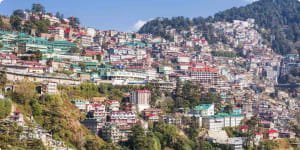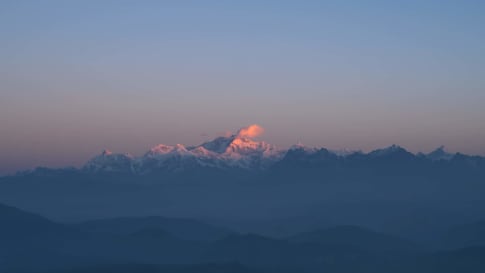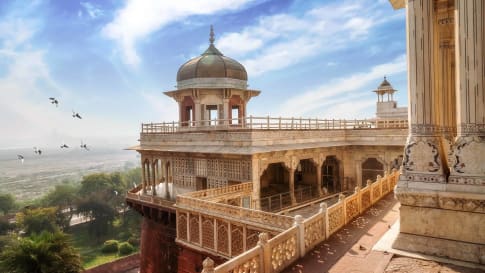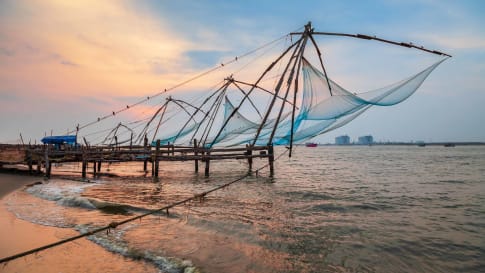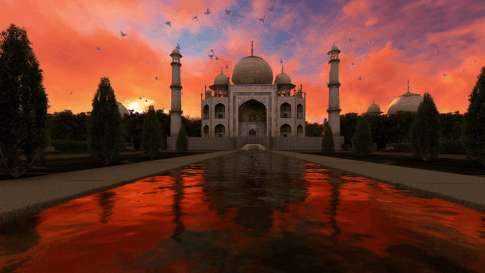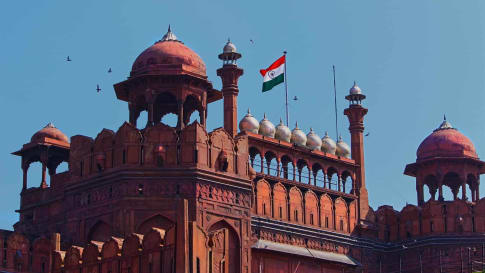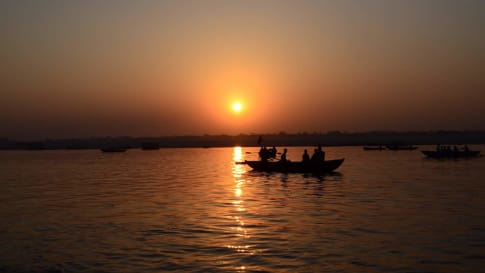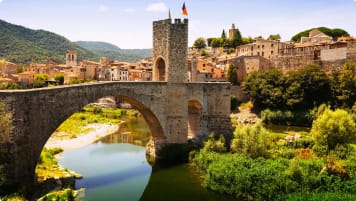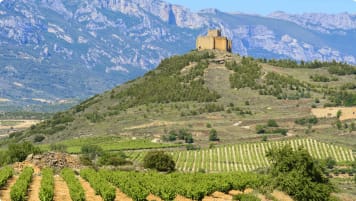North East India small group escorted cultural tour
A unique small group cultural tour visiting the North East region of India, this tour was created for seniors travelling as couples and solo travellers. As we journey through the magnificent landscape and culture we stop to explore Darjeeling, which shares history with Bengal, Sikkim, and Nepal, as well as Tiger Hill, where we witness the changing colours of the sunrise in the Himalayan Range.
From $10,557NZD

Highlights
- 1. Learn about the different steps of tea-making at Tukvar Tea Estate.
- 2. Marvel at the spectacular sunrise at Tiger Hill.
- 3. Experience the World Heritage Toy Train ride with its tiny 4-wheel locomotives.
- 4. Discover Mawlynnong Village, described by Discover India magazine as the cleanest village in India.

Departure Dates
| Departure Date | Price |
|---|---|
| 13 October 2025 Ends 27 October 2025 • 15 days $11,093 Twin $14,071 Single Available | Selected |
| 12 October 2026 Ends 26 October 2026 • days $11,093 Twin $14,071 Single Available |
North East India Escorted Small Group Tour
Odyssey offers easy, convenient, and relaxed escorted small group tours across India and the Indian sub continent. We explore India's natural beauty, its history, and colonial heritage, its World Heritage Sites, and world famous cities, all with some truly spectacular scenery along the way. This and more is all waiting to be explored on one of Odyssey’s small group tours of India, designed for the senior traveller, and led by experienced, and enthusiastic like minded people.
This North East India small group escorted cultural tours for seniors is a magnificent journey through the landscape and culture of a remarkable region. We will explore Darjeeling, which shares history with Bengal, Sikkim, and Nepal, as well as Tiger Hill, where we witness the changing colours of the sunrise in the Himalayan Range. We will ride the Toy Train, which features spectacular, breathtaking views of the Himalayan peaks. Visit Pemayangtse, enclosed on 2 sides by snow-capped mountains, and Gangtok, wreathed in clouds and located on a ridge at a height of 5,500 feet. Finally, experience Guwahati, “gateway of the North Eastern Region of the country."
The North-east India small group tour includes a number of spectacular highlights.
We visit the beautiful Ghoom Monastery, built in 1875. On our return to our hotel we see the image of the 15 foot tall Mythey Buddhat. The tour also makes a stop at the Himalayan Zoological Park, and the Snow Leopard Breeding Centre. On the same day we see visit the The Himalayan Mountaineering Institute, which was started in Darjeeling when Tenzing Norgay climbed Mount Everest.
A visit to Darjeeling of course includes a visit to a tea estate. We will take a tour of the Tukvar Tea Estate. Teas grown on the misty heights of Darjeeling are popularly known as the "Champagne of Tea" and are famous the world over for their exquisite taste.
The group also tours Pemayangtse. Founded in 1705, this is one of Sikkim's oldest and most important monasteries. We will visit Cherrapunjee, considered the wettest place on the earth, and end the tour with a half-day city tour of Kolkata.
You can learn more about India with Odyssey's country profile where all other tour departures are listed as well. For more details about this tour, click the ‘Top 5’ or ‘Itinerary’ buttons above! If you’re keen to experience this tour, please call or send an email. Or, to book, simply fill in the form on the right hand side of this page.
Articles about India
The following list of articles are either published by Odyssey Traveller or are carefully selected external sources to maximise senior traveller's knowledge and enjoyment of India when visiting:
Gallery
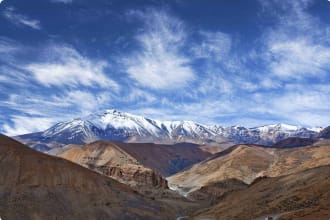
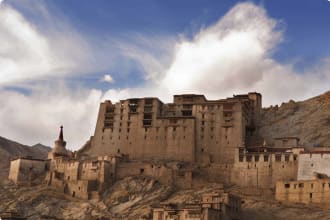
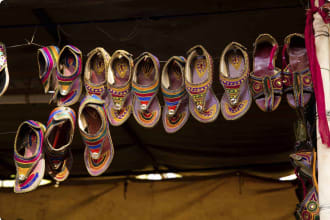
Itinerary
15 days
Day 1: Kolkata
Accommodation: 1 night at Hindustan International or similar.
Make your own way to our hotel in Kolkata.
In the evening we meet for a welcome dinner and briefing.
(D)
Day 2: Kolkata - Bagdogra & Darjeeling
Accommodation: 3 nights at New Elgin Darjeeling or similar.
After breakfast at our hotel we transfer to Kolkata Airport to board our flight for Bagdogra. We meet on arrival at Bagdogra Airport and transfer to Darjeeling by coach.
On arrival in Darjeeling we check-in at our hotel and spend the evening at leisure.
(B,L,D)
Day 3: Darjeeling
Accommodation: New Elgin Darjeeling or similar.
We have an early start this morning which is well worth it to experience a beautiful sunrise at Tiger Hill. Tiger Hill is approximately 13 kilometres from Darjeeling and from here one can see beautiful sunrises and the Himalayan Range, including Kanchandzonga and Mount Everest. The horizon changes colours just before sunrise and the entire Himalayan range turns golden – it is truly a majestic sight. Afterwards we visit the Ghoom Monastery, the oldest monastery in the area, built in 1875. On our return to our hotel we see the image of the Mythey Buddha standing majestically at 15 feet in height and enjoy breakfast.
Later we tour the town, including a visit to the Himalayan Mountaineering Institute, Padmaja Naidu Himalayan Zoological Park, and the Snow Leopard Breeding Centre. The Himalayan Mountaineering Institute was started in Darjeeling when Tenzing Norgay climbed Mount Everest. The institute was started to give mountaineering training and to teach other adventure sports related to mountaineering. We will visit the Everest Museum and Himalayan Zoological Park, where one can see Himalayan animals like the Snow Leopard, Tibetan Wolf, Tibetan Yak, Himalayan Black Bear, and several varieties of birds.
Our next stop is at the Tibetan Self-Help Centre/Refugee Centre. This institute is run by Tibetan refugees to preserve their handicrafts and one can see the making of Tibetan carpets, leather work, paintings, and woodwork.
(B,L,D)
Day 4: Darjeeling
Accommodation: New Elgin Darjeeling or similar.
After breakfast we take a ride on a World Heritage Train. The spectacular landscape unfolds as the 2-foot gauge Darjeeling Himalayan Railway labours at about 10 miles per hour crisscrossing the road. It has tiny 4-wheel locomotives (some over 100 years old) akin to living legends – one can experience the sound, smell, and romance of a bygone era. Built in 1881, it has social and cultural importance and has outstanding universal appeal. Based on its unique features, it is considered to be of lasting significance to mankind.
Later in the afternoon we visit Tukvar Tea Estate. Teas grown on the misty heights of Darjeeling are popularly known as the “Champagne of Tea” and are famous the world over for their exquisite taste. The premium Darjeeling teas are mild in character and have distinctive natural fruity flavors. The different steps in tea manufacture can be seen in the factory of the Tea Estate.
(B,L,D)
Day 5: Darjeeling - Pemayangtse
Accommodation: 1 night at Mount Pandim or similar.
After breakfast we board our coach for our journey to Pemayangtse. On arrival we check-in at our hotel.
This afternoon we take a city tour of Pemayangtse. Standing at a height of 2,805 metres and enclosed on 2 sides by snow-capped mountains, Pemayangtse is one of Sikkim’s oldest and most important monasteries. Founded in 1705, it belongs to the Tantric Nyingmapa sect, which was established in the 8th century. The monastery is a 3-story structure filled with wall paintings and sculpture, and includes a magnificent 7-tiered, painted wooden model of paradise and hell, complete with rainbows, angels, and the whole panoply of Buddha’s and bodhisattvas. The model was built by the late Dungzin Rinpoche over a period of 5 years.
(B,L,D)
Day 6: Pemayangtse - Gangtok
Accommodation: 2 nights at Norkhill Gantok or similar.
After breakfast at our hotel we depart for Gangtok. Upon arrival in Gangtok, we check-in at our hotel and spend the evening at leisure.
(B,L,D)
Day 7: Gangtok
Accommodation: Norkhill Gantok.
We start the day with a sightseeing tour of Gangtok, visiting the Namgyal Institute of Tibetology and the Chorten (memorial for the dead). We also visit the Enchey Monastery, believed to be 200 years old, and drive past the Tashiling (the Secretariat) before visiting the Palden Tondup- Cottage Industries Institute.
Later we visit the Rumtek Monastery.
(B,L,D)
Day 8: Gangtok - Kalimpong
Accommodation: 1 night at Silver Oaks Kalimpong or similar.
We board our coach this morning bound for Kalimpong. On arrival we check-in at our hotel. This afternoon we tour Kalimpong, which includes visits to Zang Dog Palri, Fo-Brang Monastery, and Thongsa Gompa. We also stop at nurseries, the local market, and the Tibetan colony.
(B,L,D)
Day 9: Guwahati - Shillong
Accommodation: 3 nights at Polo Towers Shillong or similar.
After breakfast we transfer to the Bagdogra Airport to board our flight to Guwahati. We then board our coach for our trip to Shillong, approximately a 4-hour drive.
We check-in at our hotel and after refreshment, if time permits, we visit the Cathedral of Marry and take an evening stroll to Shillong’s famous Police Bazaar.
(B,L,D)
Day 10: Cherrapunjee
Accommodation: Polo Towers Shillong or similar.
We board our coach this morning for our full-day tour. Cherrapunjee is considered the wettest place on the earth, so expect rain!
En route we visit the famous Elephant Falls and Shillong Peak to enjoy a bird’s eye view of the city. At Cherrapunjee we visit the Mawsmai Cave, see Mawsmai Falls, Seven Sisters Falls, and Nohkalikai Falls. After lunch at Cherrapunjee we visit Thankarang Park, Koh Ramhah, and Khrem Falls. We return to Shillong late afternoon. This evening we visit Ward’s Lake and the Don Bosco Church.
(B,L,D)
Day 11: Mwallynong
Accommodation: Polo Towers Shillong or similar.
After breakfast we enjoy a full-day tour to Mwallynong.
Mwallynnong Village is situated 90 kilometres from Shillong on the Shillong-Dawki Road. It is a village of 75 households with a population of 400 situated in an idyllic location. This village epitomizes a standard to which other villages aspire, and was dubbed the “cleanest village in India” by Discover India Magazine. The primary village school boasts a zero dropout record and 90% literacy rate. Paved walkways, beautiful flowerbeds, waterfalls, hilly rivulets, an acacia plantation, and an excellent view of the faraway plains of Bangladesh all contribute to the ambience of this village. Farming betel nut and leaves, broomsticks, and pepper, along with bee rearing, are the primary economic activities of this village. With the village headman himself taking the responsibility of making visitors comfortable, a day in this village gives an insight into the life of the Khasis, the influence of the church, and its metamorphosis.
(B,L,D)
Day 12: Shillong - Guwahati
Accommodation: 2 nights at Kiranshree portico / Dynasty Guwahati or similar.
After breakfast we check out of our hotel and return to Guwahati for our overnight stay. On arrival in Guwahati we check-in at our hotel. Later today we visit Kamakhya Temple, situated at the top of the Nilachal Hill at about 800 feet above the sea level. The entire temple complex not only comprises of many other temples but also a whole set of people connected with them. Apart from the main Devi Temple, it comprises of other major temples of Devi Kali, Tara, Bagala, Chinnamasta, Bhuvanesvari, Bhairavi, and Dhumavati.
We also visit Sankardev Kalakhetra. Located in a beautifully landscaped setting and inaugurated in 1998, Sankardev Kalahetra is a multi-arts complex showcasing the rich culture of the state. Named after the most honoured Vaishnava Saint and the greatest integrator of Assamese society Srimanta Sankardeva, the Kalakshetra houses a central museum where objects and day-to-day articles used by different ethnic groups are exhibited. It preserves the cultural identity of various communities and tribes of Assam by promoting dance, drama, music, and art. There is also an Artists’ Village that creates the atmosphere of a typical Assamese community, the Lalit-Kala Bhavan art gallery where exhibitions, art, and sculpture workshops are also held, a Heritage Park, an open-air theatre with the capacity to hold 2,000 people, a traditional Vaishnavite temple, and the Sahitya Bhavan library of rare books and manuscripts.
(B,L,D)
Day 13: Kukurmarai
Accommodation: Kiranshree portico / Dynasty Guwahati or similar.
After breakfast we board our coach for our full-day trip to Kukurmara to visit the Kamakhya Temple and later drive to Chaygaon.
We arrive at the Kulsi River, which is the southern tributary of the Brahmaputra River, to board our boat and cruise the river to see the Gangatic Dolphins. The river passes mainly through the Chaygaon area of the Kamrup District and country boats with no motor are used for sightseeing.
The river dolphin’s scientific name is Platanista gangetica, but they are commonly known as “Susu” in Ganges and “Hihu” in Brahmaputra. They are aquatic mammals. The dolphins are in their natural habitat and a sighting cannot be guaranteed. The boat ride is subject to river conditions.
(B,L,D)
Day 14: Kolkata
Accommodation: 1 night at Hindustan International or similar.
After breakfast we transfer to Guwahati Airport to board our flight to Kolkata. We are met on arrival and transferred to our hotel.
This afternoon we proceed with a half-day city tour of Kolkata. Kolkata is a city of glaring contrasts: a curious blend of the old and the new, partly feudal, partly born out of growing urbanization, partly undefinable. It is a medley of the East and the West, a graft of a European city imposed on the Asian landscape that gives Kolkata its bewildering charm, confusion, and excitement. Being just about 300 years old, Kolkata is not known for its great historical monuments. However, perhaps the oldest remembered is the site where the Kalighat Temple now stands. It is a city that shocks on first impression but eventually the visitor falls in love with it. The sightseeing of the city includes a visit to the Victoria Memorial, Kolkata’s most imposing and monumental dream in marble opened by the Prince of Wales in 1921 and often called the “Taj” of the British Raj. We will see St. Paul’s Cathedral and the Indian Museum which is the largest in India and has one of the best collections of Indian art.
(B,L,D)
Day 15: Kolkata
The tour ends today after breakfast.
(B)
Tour Notes
- Travel in Darjeeling will be via non-a/c jeeps due to local conditions. Similarly transportation in Assam & Meghalaya is by Toyota Innova.
Includes / Excludes
What’s included in our Tour
- 14 nights of accommodation.
- Breakfast, lunch and dinner daily, starting with Dinner on Day 1 an concluding with Breakfast on Day 15.
- Local English speaking guides.
- Travel by local air-conditioned coaches.
- Domestic flights in economy class (luggage restrictions may apply).
- Monument entrance fees as per itinerary.
- Toy Train tickets.
- Boat cruise to view the Gangatic Dolphin in Kukurmara.
- 1 Elephant ride and 1 round jeep safari including all park entry fees.
- Tipping and gratuities.
- Services of an Odyssey Program Leader.
- Detailed preparatory material.
What’s not included in our Tour
- International flights and departure tax.
- Items of a personal nature such laundry, telephone calls, and meals not included in the itinerary.
- Camera fees (still/video) at any monuments.
- Porterage at airport, railways and hotels.
- Visa for India, where applicable.
Participants must be able to carry their own luggage, climb and descend stairs, be in good health, mobile and able to participate in 3-5 hours of physical activity per day, the equivalent of walking / hiking up to 8 kilometers per day on uneven ground.
Book now
Make it a private tour
Easing your journey
Crossing international borders with restrictions
The list of requirements to travel internationally has changed and will continue to change for several years. Odyssey is here to assist you in managing your way through these requirements:
For more information see our Crossing international borders with restrictions page.
Book With Confidence
If less than 30 days before your tour starts you are unable to travel as a result of Government travel restrictions, Odyssey Traveller will assist you with a date change, provide you with a credit or process a refund for your booking less any non-recoverable costs.
See Terms and conditions for details.
Peace of Mind Travel
The safety of our travellers, tour leader, local guide and support staff has always been our top priority and with the new guidelines for public health and safety for keeping safe for destinations around the world, we’ve developed our plan to give you peace of mind when travelling with us.
See Peace of Mind Travel for details.
Reading List Download PDF
India: A History
John Keay
Fully revised with forty thousand new words that take the reader up to present-day India, John Keay’s India: A History spans five millennia in a sweeping narrative that tells the story of the peoples of the subcontinent, from their ancient beginnings in the valley of the Indus to the events in the region today. In charting the evolution of the rich tapestry of cultures, religions, and peoples that comprise the modern nations of Pakistan, India, and Bangladesh, Keay weaves together insights from a variety of scholarly fields to create a rich historical narrative. Wide-ranging and authoritative, India: A History is a compelling epic portrait of one of the world’s oldest and most richly diverse civilizations.
India: In Word and Image, Revised, Expanded and Updated
Eric Meola (Photographer), Bharati Mukherjee (Introduction)
Gorgeously jaw-dropping, India has been beautifully redesigned with 32 additional pages of glorious photos shot by Eric Meola since India was first published.
This revised and expanded version of Eric Meola's 2008 India takes the reader on a journey through Mumbai, Rajasthan, Agra, Dungarpur, along desert roads, to the Ganges water's edge, including spectacular ruins, the Taj Mahal, and the Festival of Elephants, capturing the spectacle and vibrant colors of these ancient regions.
INDIA is rapidly becoming one of the pre-eminent leaders of the twenty-first century. For more than a decade, Eric Meola has returned repeatedly to India, photographing the people, temples, landscapes, architecture, celebrations, and art of this uniquely exuberant and incredibly diverse country. Meola's journeys took him from the Himalayas and monasteries in the North to the temples of Tamil Nadu in the South, from the color and pageantry of Rajasthan in the West to the tea plantations of Darjeeling in the East. Over 200 photographs (edited from more than 25,000 images) will fill this beautifully printed, large-format book. The photographs will be accompanied by dozens of essays, stories, and poems by contemporary and classical Indian writers.
India
Stanley Wolpert
This new edition brings Stanley Wolpert's brilliantly succinct and accessible introduction to India completely up to date for a new generation of readers, travelers, and students. In crisp detail, Wolpert gives a panoramic overview of the continent on which the world's most fascinating ancient civilization gave birth to one of its most complex modern democratic nations. India now includes new sections on the country's current global economic development, the recent national elections, and on its international relations, including those with Pakistan, China, Sri Lanka, and the United States, India's new strategic global partner.
India: A Sacred Geography
Diana L. Eck
India: A Sacred Geography is the culmination of more than a decade's work from the renowned Harvard scholar Diana L. Eck. The book explores the sacred places of India, taking the reader on an extraordinary trip through the beliefs and history of this rich and profound place, as well as providing a basic introduction to Hindu religious ideas and how those ideas influence our understanding of the modern sense of "India" as a nation.
A Passage to India
E.M. Forster
Among the greatest novels of the twentieth century and the basis for director David Lean’s Academy Award-winning film, A Passage to India tells of the clash of cultures in British India after the turn of the century. In exquisite prose, Forster reveals the menace that lurks just beneath the surface of ordinary life, as a common misunderstanding erupts into a devastating affair.
The End of Karma: Hope and Fury Among India's Young
Somini Sengupta
A penetrating, personal look at contemporary India―the world’s largest democracy at a moment of transition.
Somini Sengupta emigrated from Calcutta to California as a young child in 1975. Returning thirty years later as the bureau chief for The New York Times, she found a vastly different country: one defined as much by aspiration and possibility―at least by the illusion of possibility―as it is by the structures of sex and caste. The End of Karma is an exploration of this new India through the lens of young people from different worlds: a woman who becomes a Maoist rebel; a brother charged for the murder of his sister, who had married the “wrong” man; a woman who opposes her family and hopes to become a police officer. Driven by aspiration―and thwarted at every step by state and society―they are making new demands on India’s democracy for equality of opportunity, dignity for girls, and civil liberties. Sengupta spotlights these stories of ordinary men and women, weaving together a groundbreaking portrait of a country in turmoil.
India: Brief History of a Civilization
Thomas R. Trautmann
India: Brief History of a Civilization, Second Edition, provides a brief overview of a very long period, allowing students to acquire a mental map of the entire history of Indian civilization in a short book. Most comprehensive histories devote a few chapters to the early history of India and an increasing number of pages to the more recent period, giving an impression that early history is mere background and that Indian civilization finds its fulfillment in the nation-state. Thomas R. Trautmann believes that the deep past lives on and is a valuable resource for understanding the present day and for creating a viable future. The result is a book that is short enough to read in a few sittings, but comprehensive in coverage--5,000 years of India in brief.
Incarnations: A History of India in Fifty Lives
Sunil Khilnani
For all of India’s myths, its sea of stories and moral epics, Indian history remains a curiously unpeopled place. In Incarnations, Sunil Khilnani fills that space, recapturing the human dimension of how the world’s largest democracy came to be. His trenchant portraits of emperors, warriors, philosophers, film stars, and corporate titans―some famous, some unjustly forgotten―bring feeling, wry humor, and uncommon insight to dilemmas that extend from ancient times to our own. As he journeys across the country and through its past, Khilnani uncovers more than just history. In rocket launches and ayurvedic call centers, in slum temples and Bollywood studios, in California communes and grimy ports, he examines the continued, and often surprising, relevance of the men and women who have made India―and the world―what it is. We encounter the Buddha, “the first human personality”; the ancient Sanskrit linguist who inspires computer programmers today; the wit and guile of India’s Machiavelli; and the medieval poets who mocked rituals and caste. In the twentieth century, Khilnani sets Gandhi and other political icons of the independence era next to actresses, photographers, and entrepreneurs. Incarnations is an ideal introduction to India―and a provocative and sophisticated reinterpretation of its history.
The Chaos of Empire: The British Raj and the Conquest of India
Jon Wilson
The popular image of the British Raj—an era of efficient but officious governors, sycophantic local functionaries, doting amahs, blisteringly hot days and torrid nights—chronicled by Forster and Kipling is a glamorous, nostalgic, but entirely fictitious. In this dramatic revisionist history, Jon Wilson upends the carefully sanitized image of unity, order, and success to reveal an empire rooted far more in violence than in virtue, far more in chaos than in control.
Through the lives of administrators, soldiers, and subjects—both British and Indian—The Chaos of Empire traces Britain’s imperial rule from the East India Company’s first transactions in the 1600s to Indian Independence in 1947. The Raj was the most public demonstration of a state’s ability to project power far from home, and its perceived success was used to justify interventions around the world in the years that followed. But the Raj’s institutions—from law courts to railway lines—were designed to protect British power without benefiting the people they ruled. This self-serving and careless governance resulted in an impoverished people and a stifled society, not a glorious Indian empire.
Jon Wilson’s new portrait of a much-mythologized era finally and convincingly proves that the story of benign British triumph was a carefully concocted fiction, here thoroughly and totally debunked.
Behind the Beautiful Forevers: Life, Death, and Hope in a Mumbai Undercity
Katherine Boo
In this brilliant, breathtaking book by Pulitzer Prize winner Katherine Boo, a bewildering age of global change and inequality is made human through the dramatic story of families striving toward a better life in Annawadi, a makeshift settlement in the shadow of luxury hotels near the Mumbai airport. As India starts to prosper, the residents of Annawadi are electric with hope. Abdul, an enterprising teenager, sees “a fortune beyond counting” in the recyclable garbage that richer people throw away. Meanwhile Asha, a woman of formidable ambition, has identified a shadier route to the middle class. With a little luck, her beautiful daughter, Annawadi’s “most-everything girl,” might become its first female college graduate. And even the poorest children, like the young thief Kalu, feel themselves inching closer to their dreams. But then Abdul is falsely accused in a shocking tragedy; terror and global recession rock the city; and suppressed tensions over religion, caste, sex, power, and economic envy turn brutal. With intelligence, humor, and deep insight into what connects people to one another in an era of tumultuous change, Behind the Beautiful Forevers, based on years of uncompromising reporting, carries the reader headlong into one of the twenty-first century’s hidden worlds—and into the hearts of families impossible to forget.
Winner of the National Book Award | The PEN/John Kenneth Galbraith Award | The Los Angeles Times Book Prize | The American Academy of Arts and Letters Award | The New York Public Library’s Helen Bernstein Book Award
